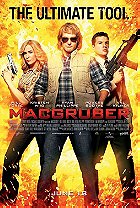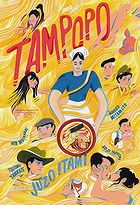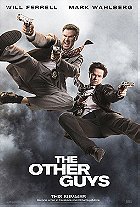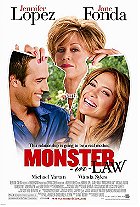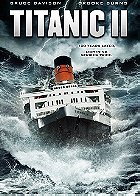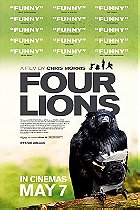Up until its release, there had never been - and, since its release, there never has been - a film quite like The Rocky Horror Picture Show. In terms of the mixture of horror, camp, rock n' roll, sci-fi and sexual transgression, as well as the cheesy B-movie dialogue and the behaviour it continues to inspire during midnight theatre screenings, this classic film is absolutely unique in the annals of cinema. Added to this, The Rocky Horror Picture Show is the ultimate cult movie and the queen of all midnight flicks. It was a box office bomb when first released back in 1975, but the film soon attracted a large number of devoted fans and gradually developed into a bona fide cult phenomenon. In short, The Rocky Horror Picture Show provides the right combination of corny fright-flick parody, comedy, outrageous vulgarity and musical numbers to entertain any viewer with an open mind.
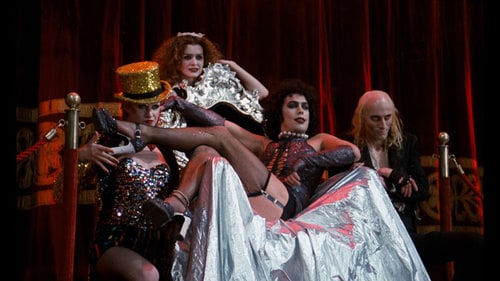
The protagonists of the story are Brad Majors (Bostwick) and Janet Weiss (Sarandon); a virginal, recently-engaged couple whose car breaks down on an isolated road late at night during a thunderstorm (is that not always the case in horror movies?). Seeking a phone, Brad and Janet venture up to a mysterious castle which, as it turns out, belongs to a transvestite scientist named Dr. Frank-N-Furter (Curry). Unbeknownst to the couple, Frank-N-Furter is holding the annual convention of visitors from the planet Transsexual (in the universe Transylvania), and he is about to bring to life his first creation: the blonde, muscular Rocky Horror (Hinwood). The night that ensues can only be described as weird in ways that must be seen to be believed. A barely coherent plot eventually begins to emerge concerning Rocky escaping and a UFO scientist showing up to investigate the Transylvanians, but it barely matters. All of the narrative threads merely serve to string together the unstoppably infectious songs.
Really, the plot is just incidental to the movie's outrageous tone. At its heart, The Rocky Horror Picture Show is a '50s rock musical that's been pumped up with a camp sensibility and a delicious sense of humour. Admittedly, there are little technical glitches here and there, but rarely has there been a more creatively shot and edited motion picture than this. Practically every single angle, cut, zoom and optical transition was employed to effectively maximise each respective scene. The musical numbers are solid evidence of this - in particular, The Time Warp and Sweet Transvestite are models of brilliant filmmaking which capture the rhythm of both the tunes and the characters. The songs themselves, too, add to the pervasive sense of fun. The majority of the songs will likely remain in your head for days after watching the film (The Time Warp is going through this reviewer's head right now). The sign of a good musical is how memorable the songs are, so it's fortunate that the songs are so good here. They are the major driving force behind the flick, after all, as the plot is a decidedly secondary concern to the musical set-pieces.

Originally written as a stage music by Richard O'Brien - who stars here as the hunchbacked, Igor-esque butler Riff Raff - The Rocky Horror Picture Show is essentially a send-up of B-grade sci-fi and horror clichés as well as a satire of mainstream America's reaction to the depravities of the sexual revolution. In addition, there was one factor which allowed The Rocky Horror Picture Show to emerge as something more than just another quirky film: audience participation. In fact, the film brought a new meaning to the term "audience participation" - devoted fans put on their own shows during screenings that are as entertaining as the film itself. Fans typically don transvestite costumes, sing along, dance in the theatre aisles, add their own "calling back lines" (to respond to lines of dialogue or take the plot in a new direction), and bring props to use at certain moments. No film before or since has managed to engage audiences to this extent. If there's a fault with The Rocky Horror Picture Show, it's that, with the film charging forward from set-piece to set-piece at a furious pace, things get a tad tiresome towards the end.
Constantly driving the film forward are a number of extremely enjoyable performances. The film's androgynous powerhouse front-man is Tim Curry as Frank-N-Furter; essentially the Willy Wonka of this pleasure factory. On screen, the star struts and purrs like the most self-confident burlesque queen in history. In both the musical numbers and scenes of pure dialogue, Curry's performance is delightfully dynamic and makes the film even more enjoyable. Outside of Curry, the film also features great performances by Barry Bostwick as Brad Majors, and a very youthful Susan Sarandon as Janet Weiss. The Rocky Horror Picture Show is a constantly exhilarating experience, and the level of fun will undoubtedly be elevated if you see it in a cinema full of people who know all the song lyrics and dance moves.

An interesting story exists regarding this movie's elevation to cult phenomenon. After initially flopping at the box office, it was quickly pulled from general release. Once it left theatres, a curious turn of events took place in New York City. Groups of devoted fans started demanding repeat showings of the movie, and a theatre agreed to screen it at midnight once regular showings for the day had ceased. This trend eventually caught on, and fans began attending regular midnight showings. The rest is history. As of its 35th anniversary (2010), The Rocky Horror Picture Show is still playing certain in cinemas across the globe; a mind-boggling fact considering that modern big-budget movies remain in cinemas for a couple of months at most. The uniqueness of The Rocky Horror Picture Show is essentially lightning in a bottle, which is emphasised by the fact that the same creative team were unable to replicate the film's success with the follow-up feature; 1981's Shock Treatment.
Essentially, The Rocky Horror Picture Show has ceased being just a movie - it has instead become the centre of a ritualistic celebration of popular culture in all of its twisted forms. To be complete, The Rocky Horror Picture Show requires a two-way exchange between the movie and its audience, making it an engaging communal experience. It should be noted, however, that the film is not necessarily for everyone - the reckless abandon with which the characters "give themselves over to absolute pleasure" and "swim the warm waters of sins of the flesh" may turn off those with somewhat puritanical viewers. Those capable of adapting to the film's anything-goes attitude, though, should enjoy themselves. But one thing is inarguable: love it or hate it, this is a hard film to forget.
8.8/10
 Login
Login
 Home
Home 183 Lists
183 Lists 1674 Reviews
1674 Reviews Collections
Collections
 0 comments,
0 comments, 



